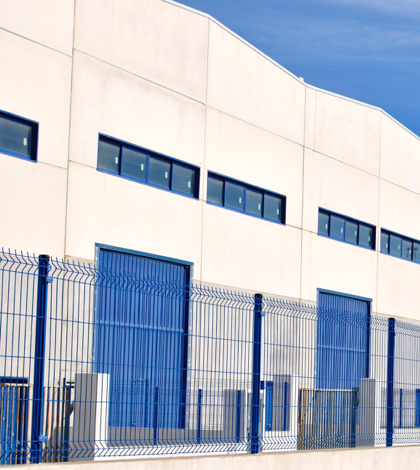Vacancy is down, absorption is up and there’s a lot of new product that is expected to come on line this year, according one major brokerage house. Meanwhile, the region’s office market is still fighting to catch up, but even there there’s reason for optimism.
INDUSTRIAL: There’s no denying that the Inland Empire industrial market is on fire at the moment, and it’s showing no signs of slowing down.
About 5.2 million square feet of industrial space was absorbed in the Inland region during the first quarter, according to Colliers International’s recent quarterly report on the market.
That was the 22nd consecutive quarter of positive net absorption for Riverside and San Bernardino counties. If that pace continues, the Inland Empire will top the 14.5 million square feet of industrial space it absorbed last year.
One reason the market is performing so well is that there’s a good balance between supply and demand. That’s reflected in the region’s vacancy rate, which was 4.5 percent in the first quarter of this year and 4.3 percent in the fourth quarter of 2014, basically unchanged.
The Inland industrial market might be performing better than it ever has, even better than the mid-2000s when it was the busiest industrial market in the United States, said Tom Taylor, senior executive vice president with Colliers International Ontario.
“I don’t think I’ve ever seen the market doing better than it is now,” said Taylor, an industrial broker since the mid-1970s. “Certainly this is the best it’s been since before the market cratered, and barring anything unforeseen, I don’t see that changing. There’s too much demand out there, too many business looking for space.”
A lot of developers are banking on the Inland industrial market staying up, as the region is currently seeing more than its share of steel in the ground on speculative warehouse-distribution projects.
During the past 12 months, more than 25 million square feet of projects were completed in the two-county region, and a little more than seven million square feet of industrial space is expected to be finished during the current quarter, according to Colliers.
Industrial rents in the Inland region cratered five years ago, hit bottom in late 2010, when they hit 30 cents per square foot. Since then they’ve recovered steadily and are now close to 45 cents per square foot, their all-time high according to Colliers.
One reason the market is performing so well now is that it’s balanced, with projects of 500,000 square feet and up no longer dominating the landscape. Buildings between 200,000 and 400,000 square feet are being leased and are taking up their share of the market.
“There’s been a lot activity in the 200,000-square-foot range, and that’s good,” Taylor said. “The smaller buildings bring more investment into the market. Not everything has to be big-box.”
One possible cloud on the horizon is the latest strike by truck drivers who move goods at the ports of Los Angeles and Long Beach, some of whom walked off the job last week in a dispute over wages and their status as employees.
The last port strike, which was settled in February, affected close to 30 ports up and down the west coast and interrupted some shipments in and out of the Inland Empire, although the total impact on the region was minimal.
What impact this strike will have remains to be seen, but it’s too early to worry, according to Inland economist John Husing.
Much depends on whether the International Longshore and Warehouse Union ultimately supports the strike, Husing told iebusinessdaily.com last week.
“If they vote to support it we have an issue, and if they don’t, we don’t,” Husing said. “If they support it, then this could last for awhile and our logistics people won’t get called to work because there won’t be any [goods] to handle.”
OFFICE: The Inland Empire office market is on the rise. Maybe even better than the numbers indicate.
That’s the opinion of Bob Caudill, regional director with Colliers International and an office specialist.
Caudill, who has spent 25 years representing landlords and tenants in office transactions, likes much of what he sees in Colliers’ quarterly report on the Inland Empire office market.
Vacancy dropped to 16 percent during the quarter, down from 17 percent during the fourth quarter of 2014 and down from 19 percent year-over-year.
Net absorption of office space in Riverside and San Bernardino during the first quarter was 206,300 square feet. That was up from 172,620 square feet of absorption during the last three months of 2014.
Neither of those are outstanding numbers, but Caudill still expresses optimism about where the market is headed, even predicting that some speculative projects might happen again soon on the west end, in particular Ontario and Rancho Cucamonga.
“I think the office market is doing dramatically better,” Caudill said. “There are still barriers to entry in the Inland Empire that you don’t have in some other office markets, but I still expect to see the market improve.”
Rents are low compared with Los Angeles and Orange counties. Caudill believes Orange County could determine the future of the Inland Empire’s office market.
“Rents there are on the rise, and while it’s true their vacancy is about 12 percent, some of that doesn’t count because it’s not leasable,” Caudill said. “Companies will start looking outside the market for office space, and a lot of them could end up in the Inland Empire.”
During the first quarter, Class A office space in the two-county region leased for an average of $1.67 a square foot, which is essentially unchanged over the last two years. about where it’s been every quarter for the past two years.
The Inland Empire currently has 20.5 million square feet of office space, or about seven percent of the total office space in the greater Los Angeles market, according to Colliers.
 IE Business Daily Business news for the Inland Empire.
IE Business Daily Business news for the Inland Empire.


